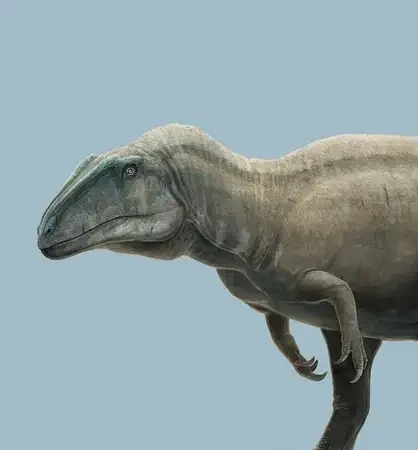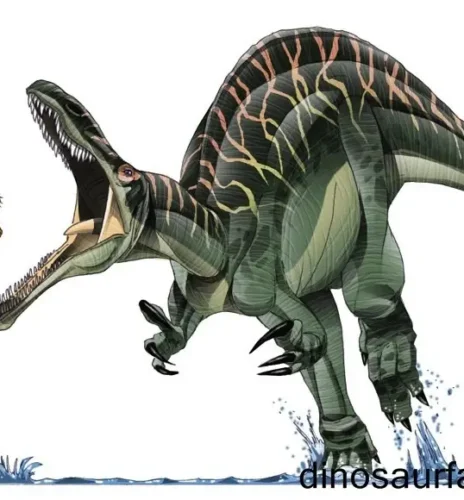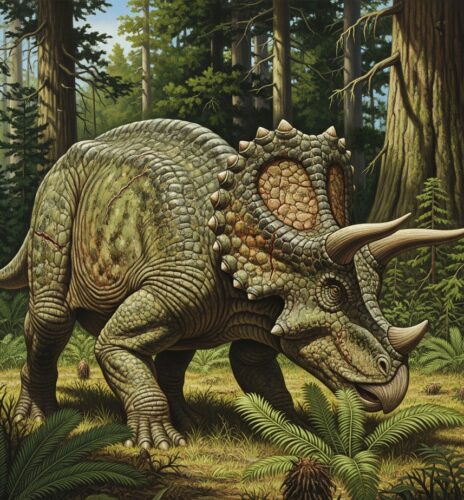Within the annals of North American paleontology, a select few theropods hold the title of apex predator. While many immediately think of Tyrannosaurus rex, an even earlier giant reigned supreme during the Early Cretaceous period: Acrocanthosaurus atokensis. At an estimated length of 11 to 12 meters (36 to 39 feet), this formidable dinosaur was one of the largest land carnivores of its time, and a wealth of scientific research has helped to piece together the story of this unique creature.
The most defining characteristic of Acrocanthosaurus is the row of tall neural spines that extended from the vertebrae of its neck, back, and hips. While not a true sail like that of Spinosaurus, these spines were broad and robust, serving as attachment points for a substantial ridge of muscle. The purpose of this feature remains a topic of scientific inquiry, but it is believed to have been a powerful, muscular crest that may have played a role in muscle support for its strong back, or possibly served as a display structure for communication or attracting mates.
Anatomical studies have provided significant insights into its hunting style. Unlike the skull of T. rex, which was built for bone-crushing, the skull of Acrocanthosaurus was long, low, and equipped with laterally compressed, serrated teeth. This morphology suggests a focus on tearing and slicing through the flesh of large prey. Its forelimbs, while relatively small like those of other large theropods, were notably robust and armed with sharp claws, indicating a capacity for grappling and holding onto struggling prey.
Evidence from the fossil record also offers intriguing clues about its behavior. A famous trackway site in Glen Rose, Texas, known as the Paluxy River trackways, shows the footprints of a large theropod alongside those of a gigantic sauropod. Some interpretations of this trackway suggest that the theropod, widely believed to be Acrocanthosaurus, may have been stalking or even attacking the sauropod. This provides potential, albeit debated, evidence for a pack-hunting strategy, which would have been necessary for a predator to take down such enormous prey.
The story of Acrocanthosaurus research began with the discovery of two incomplete skeletons in Oklahoma in the 1940s. However, the discovery and subsequent study of a remarkably complete specimen, nicknamed “Fran,” in the 1980s, transformed scientific understanding of this dinosaur. This find, with its nearly complete skull and other skeletal elements, has been central to modern research, helping to clarify its evolutionary relationships and place it firmly within the Carcharodontosauridae family—a group of large, shark-toothed theropods.
As paleontologists continue to unearth and analyze new fossil material, the scientific understanding of Acrocanthosaurus continues to evolve. From its distinctive muscular ridge to its specialized hunting adaptations, this Early Cretaceous giant stands as a testament to the incredible diversity and complexity of prehistoric ecosystems.
Scientific References for Further Reading
This article is based on the general scientific consensus derived from the publications and research below. For a more detailed and in-depth understanding, these original scientific sources are highly recommended.
- Stovall, J. W., & Langston, W. (1950). Acrocanthosaurus atokensis, a new genus and species of Lower Cretaceous Theropoda from Oklahoma. The American Midland Naturalist. (The original description of the genus and species.)
- Harris, J. D. (1998). A reanalysis of Acrocanthosaurus atokensis, its phylogenetic status, and paleoecological implications. New Mexico Museum of Natural History and Science Bulletin. (A key paper that re-examined the known fossil material and provided a new analysis of its anatomy.)
- Currie, P. J., & Carpenter, K. (2000). A new specimen of Acrocanthosaurus atokensis (Theropoda, Dinosauria) from the Lower Cretaceous (Aptian) Antlers Formation of Oklahoma, USA. Geodiversitas. (This publication describes the “Fran” specimen, which provided a wealth of new anatomical information.)
- D’Emic, M. D., Melstrom, K. M., & Eddy, D. R. (2012). Paleobiology and geographic range of the large-bodied Cretaceous theropod dinosaur Acrocanthosaurus atokensis. Palaeogeography, Palaeoclimatology, Palaeoecology. (A comprehensive study on the growth and distribution of Acrocanthosaurus.)
- Eddy, D. R., & Clarke, J. A. (2011). New Information on the Cranial Anatomy of Acrocanthosaurus atokensis and Its Implications for the Phylogeny of Allosauroidea (Dinosauria: Theropoda). PLoS ONE. (A detailed re-evaluation of the skull, which clarified its relationship with other allosauroids.)
- Thank you to Gabriel N. Ugueto for this image. His website for all types of art is here https://gabrielugueto.com/



